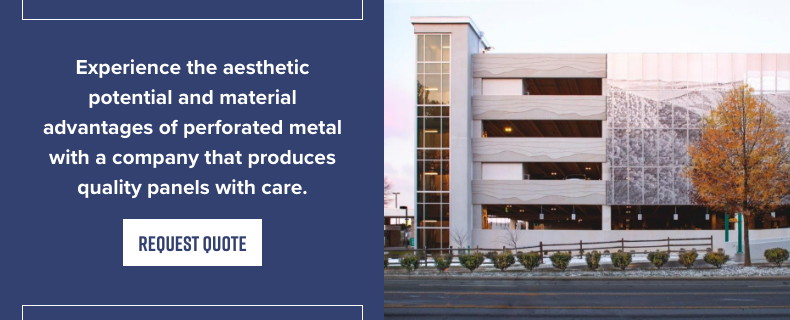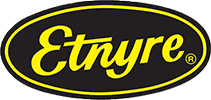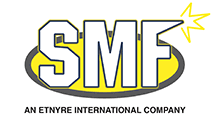Uses for Decorative Perforated Metal in Design
Perforated sheet metal is a versatile product that can be used for both structure and design. With perforation patterns coming in many styles, these panels allow light, water, and air to pass through while also enclosing spaces, providing structural support, or simply adding aesthetic value to a space.
The sheets can consist of various metals, such as stainless steel, aluminum, and copper, and they can be customized to create unique designs that make facades, infill panels and other architectural pieces stand out. With such possibilities, there are many architectural applications for perforated metal and advantages to using this material in your designs!
How Perforated Metal Is Used in Architectural Design
Perforated metal applications are increasing in popularity. With this material no longer being relegated to industrial or commercial buildings, architects, builders, and interior decorators are exploring the possibilities presented by using decorative perforated metal for residential builds. As industrial styles gain momentum in the residential design space, designers are incorporating metal in new and exciting ways. Consider the following architectural possibilities for incorporating perforated metal in your next project.
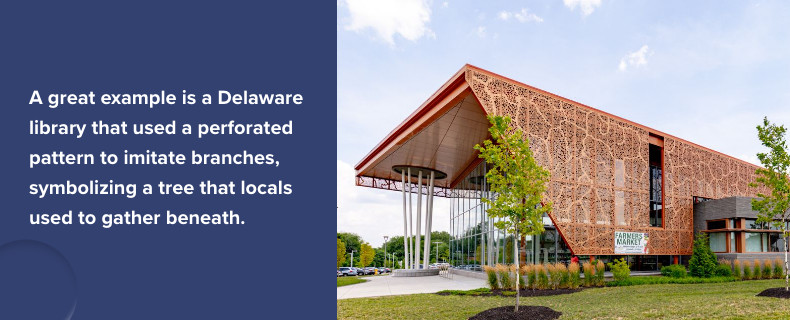
Facades
Using perforated metal on facades is a popular application. With various design possibilities, facades can be beautiful statement walls and promote visual interest. The capabilities for customization allow architects to incorporate signature embellishments unique to the project. For instance, the Asheville airport sports a beautiful perforated metal facade featuring the nearby Blue Ridge Mountains. Another great example is a Delaware library that used a perforated pattern to imitate branches, symbolizing a tree that locals used to gather beneath.
Metal facades also have great functional value. The holes in the metal panels allow light and air to travel through while also blocking harmful UV rays. When the panels are placed in front of windows or openings, people on the opposite side of the decorative metal will continue to benefit from natural light without the damaging effects of direct sunlight.
For outdoor applications, these panels can also block the worst of harsh weather from drifting into openings. Best of all, they require minimal maintenance depending on the metal you choose.
Outdoor Awnings
Similar to facades, using perforated metal on outdoor awnings adds visual interest and provides protection from the elements. Using custom, eye-catching patterns adds to the aesthetic of an outdoor space while also filtering light and offering sun protection and adequate ventilation. These metal panels can be used over walkways, entrances, patios and outdoor eating areas. They can also enhance the trimming around a building.
Perforated panels give the sense of being out in the open without being exposed. The reduced impact from UV rays and inclement weather can also improve the life span of structural elements or decor that may normally receive harsh treatment.
The smaller and more prolific the perforation, the more abundant the shade and protection becomes. Though the perforations won't keep out all moisture, they allow enough sunlight and air to help prevent moisture build-up after rain or snow. Plus, the style and pattern you use can easily tie to the rest of the decor and create interesting shadow patterns on the floors and walls.
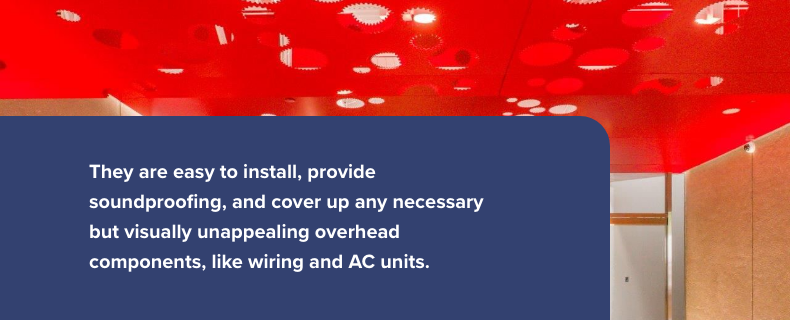
Suspended Ceilings
Using perforated panels in place of ceiling tiles has multiple benefits. Design variables such as color, pattern, and perforation diameter can produce visually appealing spaces, and the panels add to the aesthetic of offices, conference rooms, and even finished basements. They are easy to install, provide soundproofing and cover up any necessary but visually unappealing overhead components, like wiring and AC units.
Since they're easy to remove, they make it simple for maintenance workers to access HVAC units, pipelines or wires. The perforations also allow air to naturally circulate from central air systems without requiring additional vents or exposed ductwork. Whether you're outfitting an assembly plant with statement pieces or providing soundproofing panels for someone's basement, perforated metal may be the right choice for your next project.
Exterior Screens
Exterior screens offer privacy and cover for buildings and outdoor settings, and perforated metal is a great material for implementing them. Though perforations may seem counterintuitive to privacy, the holes' density and diameter create a mesh-like appearance that shields whatever is behind them, especially at a distance. The perforations simultaneously provide airflow and light filtration — things that aren't necessarily possible with other materials.
Perforated panels can be used across entire office buildings, parking garages or even as privacy screens on backyard patios or apartment balconies. Opportunities abound!
The meshing's density and diameter can also hide structures or fixtures that don't fit your desired aesthetic. Whether you're making a parking garage more visually interesting next to a hospital or hiding an outdoor HVAC unit or pool system in someone's backyard, decorative perforated metal panels can serve as great exterior screens.
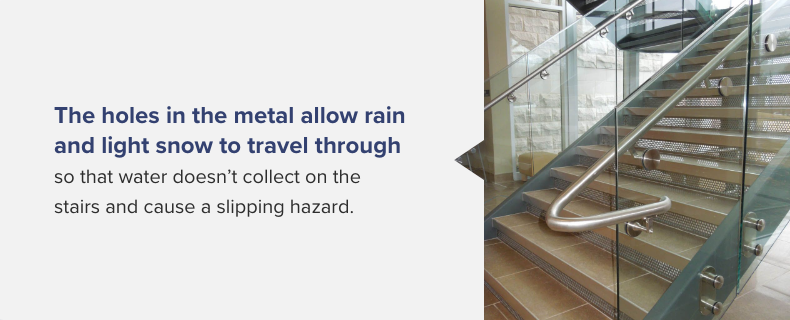
Stair Treads and Risers
One very practical application for perforated metal is stair treads. These panels can especially be a great solution for outdoor stairways. The holes in the metal allow rain and light snow to travel through so that water doesn't collect on the stairs and cause a slipping hazard. The texture also provides better slip resistance, while its load-bearing potential and durability enhance structural integrity.
You don't have to stop at stair treads, either. You can use perforated metal on stair risers as well. Using unique patterns can create a statement-making design element on risers paired with non-metal treads or as backings on open-riser staircases, especially if young children or pets are involved. In some instances, allowing light and air to pass through the stairs can prevent the dark and dreary mood of stairwells, especially in industrial settings, and add to a light and airy atmosphere.
Infill Panels
Whether outdoors or indoors, perforated infill panels have great design potential and offer many practical applications. Whether a space needs a flourish or just the protection and durability that metal panels afford, you can incorporate perforated metal in a myriad of ways. It can be used on indoor or outdoor stairways or balconies.
The design's versatility works well for incorporating patterns that tie into the building's aesthetic or liven up an otherwise neutral walkway. The perforations also strike a balance between privacy and filtration that can help deaden sound without visually closing off the space. Infill panels with this design will be anti-rust, easy to maintain, and long-lasting. They're the perfect way to create visual interest while also staying true to building code specifications.
Perforated Metal Signage
Sometimes, the details are what make a project shine. Perforated metal signage can add texture, color, shape, and imagery to projects for extra flair. Whether you're producing logos, graphics, or text, you can create one-of-a-kind architectural accents with perforated panels.
Sports facilities could incorporate perforated panels to highlight their key players or show off a mascot, while an industrial complex could make a bold statement with its entryway building numbers. Layering colored panels or using them as the backdrop for signs are other design techniques we've accommodated.
These are just some of the design applications available to architects, but using perforated metal goes beyond styling. It offers many other benefits, too.
Why Perforated Metal for Architectural Design
Designing buildings with style is great, but what about functionality? Can the two coexist? Absolutely. Perforated metals lend style, sustainability and strength to your projects, among other great assets. Let's look at some additional benefits of choosing perforated panels.
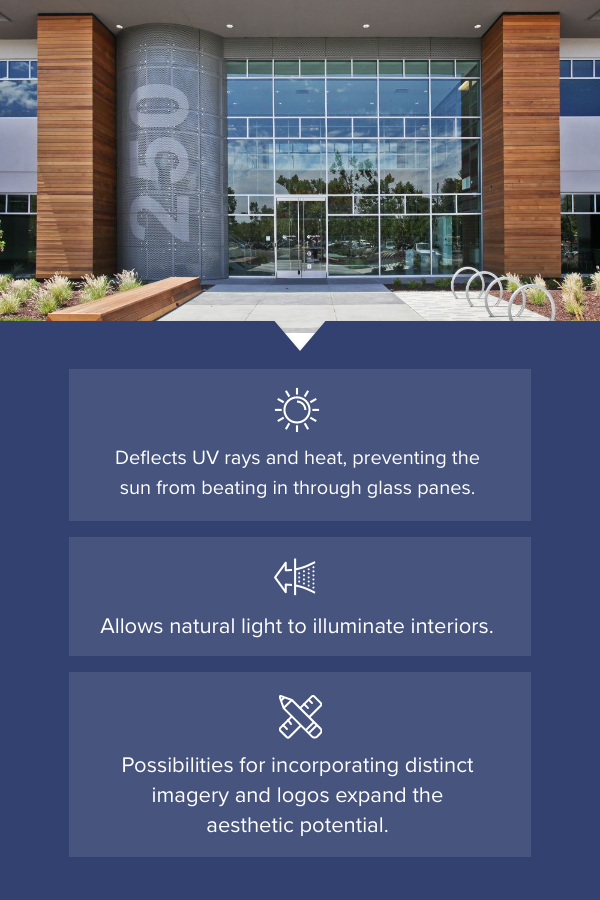
Aesthetics
As designers embrace modern design aesthetics, decorative perforated sheet metal has become a high-demand material. With technology advancements, there are more ways than ever to customize perforated sheets to create a unique look and feel for a project. Patterns range from circles to elaborate shapes, with diameters varying widely across custom sizes. Hendrick Architectural Products has a laser that can cut holes and designs according to your desires.
The possibilities for incorporating distinct imagery and logos expand the aesthetic potential even further, along with color options to match corporate palettes. Whether you're tackling something small or expansive, these metal panels can fit the bill.
Perforation also allows natural light to illuminate interiors, which cuts artificial light usage and fosters productivity in offices. Windows can do this too, but perforated metal deflects UV rays and heat, preventing the sun from beating in through glass panes and causing building occupants to overheat. The barrier also creates a balance of cultivating privacy while accommodating exterior views.
Versatility
The many design applications we've covered — from facades to infill panels — demonstrate the design versatility afforded to architects when they use perforated sheet metal. The material offers significant architectural potential because it can be made from an assortment of metals. You also won't be limited to one type of metal, allowing you to mix and match metals needed for various purposes.
Whether you need a lightweight decor piece made of aluminum or an important structural component derived from steel, you can make your vision possible with perforation technology, panels, and coils.
Durability
Metal is a durable building material with a multitude of benefits. It can withstand harsh weather and climates and manage and regulate pressure due to its strength-to-weight ratio. It contributes to the building's structural integrity without adding additional pressure or weight on frameworks or seams. Metal is both stronger and longer-lasting when compared to other materials. There's a reason why architects don't often build wooden museums, offices or skyscrapers.
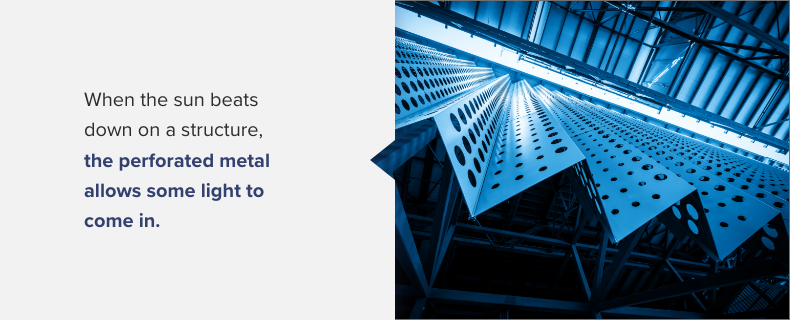
Energy Efficiency
Perforated metal protects temperature-sensitive buildings and decreases utility costs. It serves as a barrier to shield structures and reduces heating and cooling bills by balancing the difference between lighting and ventilation. When the sun beats down on a structure, the perforated metal allows some light to come in. This lowers the need for artificial lights and cuts down on electric energy while also blocking UV rays and preventing heat from making the HVAC system work overtime.
Plus, perforated metal panels do all this while facilitating a beautiful glow on the architectural design once the natural light filters in.
Eco-Friendliness
As businesses go green and take their carbon footprints seriously, it's important for architects to consider the most sustainable materials when renovating or building structures for these clients. Perforated metal is the perfect solution. There are several reasons why it is an eco-friendly option:
Can be recycled: Metal can be recycled repeatedly, so if it's ever time to upgrade your metal panels, the material can be reused and turned into something new. You could also use recycled metal for your own design!
- Lowers energy use: Perforated metal shields structures from the elements and harsh sun rays, cutting down on energy expenditures.
- Promotes sustainability: Metal is a long-lasting material. Perforated metal designs will stand the test of time without requiring additional materials to support their structure and overall maintenance.
- Reduces the amount of fuel used during transport: Perforations decrease the metal's weight, making it lighter to transport and therefore burning less fuel.
Metal's malleability and versatility also make it a great product for innovation. As architects and designers explore new ways to incorporate it in their constructions, they promote the potential for more environmentally friendly structures.
LEED stands for the U.S. Green Building Council's Leadership in Energy and Environmental Design rating system. The certification program ranks industrial and commercial buildings on four rating levels based on how sustainably they're designed, from Platinum to Certified. Although LEED certification varies depending on the building type, it typically evaluates buildings in six categories:
- Site sustainability
- Water use efficiency
- Energy and atmosphere
- Resources and materials
- Environmental quality indoors
- Location and transportation
Perforated metal designs can help your building become LEED certified, as they are easy to recycle, reduce energy usage and enhance airflow while naturally dissipating heat. Sunshades are a common use for perforated metal, maintaining sunlight levels to better control heating and cooling.
Enhanced Privacy
Certain industries desire or require added layers of privacy, whether due to the sensitive nature of their work or to provide a sense of security for their employees and customers. Hospitals, residential apartments, emergency services facilities and government buildings are just a few places that can reap the rewards of additional screening without resorting to solid walls.
The perforation's density will determine the privacy level, so there are numerous options for all industries looking to add a buffer between outside eyes and the workings of their buildings — an incredibly valuable safety feature.
Sound Absorption
Grand, open spaces can create beautiful design statements, but they can be a disaster for acoustics. Heels clacking on the floor or conversations that seem to boom through a space can be disruptive, meaning the form practically defeats the function. However, this is not so with perforated metal panels. Incorporating this paneling into ceiling tiles, infill panels, stairways and internal facades diffuses the sound and prevents noise distraction. This way, architects can build large, open spaces without worrying about any noisy aftermath once the structure is occupied.
Vaulted ceilings and open, highly trafficked spaces aren't the only places where you can diffuse sound. Many industries can benefit from sound-absorbing perforated metal panels, like transportation, HVAC, conferences halls and centers, restaurants and recording studios.
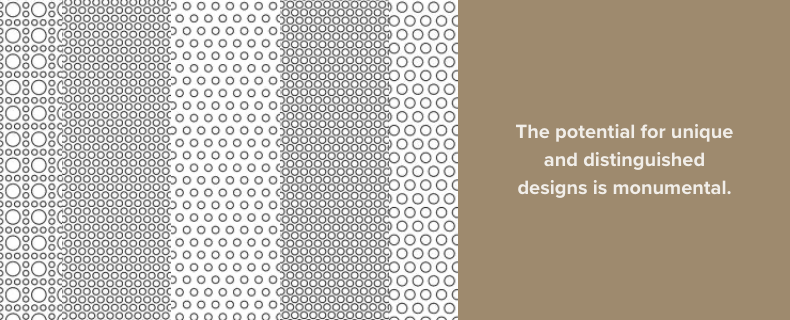
Pattern Options
Perforation patterns are one of the most exciting design features of decorative metal panels. The potential for unique and distinguished designs is monumental. Whichever style you intend for an architectural design, there is a pattern that can fit in and add to the aesthetic.
Geometric shapes such as circles, squares, rectangles and hexagons can be arranged uniformly or in unique combinations, like lotuses and starbursts. Logos and text can be portrayed with special technology that creates beautiful renderings fitting any brand, no matter how complex a graphic might be. Having this kind of flexibility is a powerful asset in any designer's arsenal!
Material Options
When it comes to perforated metal, there are many materials to choose from:
- Cold rolled steel: This material offers an economical, clean appearance and tight tolerances.
- Stainless steel: A common material, stainless steel is strong, corrosion-resistant, and ideal for exteriors.
- Aluminum: Aluminum decorative sheet metal is malleable, corrosion-resistant, and lightweight.
- Copper: Copper is malleable, has corrosion-resistant properties and maintains its distinct, attractive appearance.
- Nickel alloys: Alloys are corrosion-resistant and can tolerate high-heat applications.
- Whatever the project may be, perforation technology can provide a material best suited for the structural application and design.
Why Use Perforated Metal Instead of Other Materials
Of course, perforated metal isn't the only material on the market. Wood and plastic are also popular and widely used choices for buildings and architectural designs. The timelessness of wood can add a beautiful texture, while plastic can be an affordable alternative to natural materials. Here's why you should still consider metal over these two options.

Wood
Wood is a lovely natural material. While it has its purpose in architectural design, perforated metal can make it superfluous in many scenarios that would benefit from using metal over wood. Three big reasons to choose perforated metal over wood are its durability, sustainability and malleability:
Durability: Concerning strength and durability, wood can only go so far. As a natural resource, it's susceptible to several natural weaknesses, such as rot, moisture absorption, fire damage and insect infestations. The swelling and shrinking of wood during the seasons may add character in stick-built homes, but there's no room for that kind of unpredictability in industrial buildings and structures. Introducing metal as a building material completely transformed our skylines, and that's because its resilience opened a new world of structural possibilities.
Sustainability: Wood is also not as sustainable as metal. Though both are harvested from the Earth — trees and ore from the Earth's crust — metal can be recycled repeatedly, while wood can only be repurposed. Even the scraps from metal production can be recycled, but wood shavings and cuttings can't. Trees can be replanted for harvesting, but that's a long process requiring years and significant care and attention to maintain, not to mention the impact it can have on ecosystems and wildlife.
Malleability: Lastly, wood is less malleable than metal. Logs can only be cut into so many different shapes, mostly planks or thin panels, while still maintaining their strength and beauty for architectural applications. In contrast, metals come in various colors and textures but can also be rolled out into large sheets or perforated into extensive patterns. One piece of metal can be shaped into a lightweight facade that would require many wood panels to recreate.
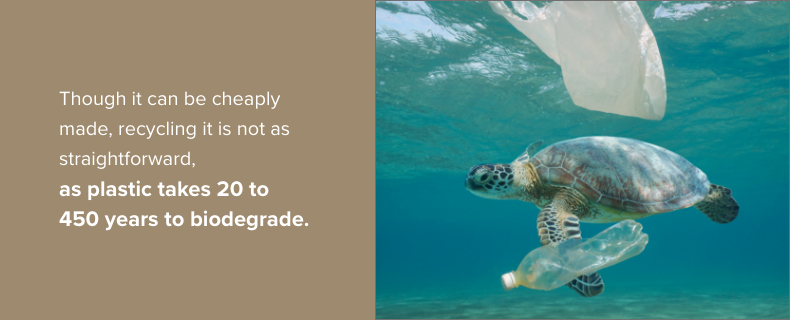
Plastic
Plastic is wreaking havoc on the environment, and companies are being held accountable for how they use it. Though it can be inexpensively made, recycling it is not as straightforward, as plastic takes 20 to 450 years to biodegrade. Metal is a much more sustainable resource than plastic, in addition to being stronger and more heat tolerant. Other weaknesses to consider include:
- Plastic degrades under extreme temperatures.
- Prolonged UV exposure can cause cracks and discoloration.
- Plastic is sensitive to acidity and corrosive elements.
- Plastic has many applications, but when it comes to building structures, it cannot compare to the durability and environmental friendliness of metal.
Learn More About Perforated Metal From the Industry Experts
With robust architectural design applications and structural benefits, perforated metal is worth incorporating into your designs. Just as with any material, how you source it can make the difference between a positive experience and a production nightmare. That's why you should trust Hendrick Architectural Products with your design plans.
We are a family-owned and -operated business that can provide a personal touch along with efficient manufacturing turnarounds that support large-scale orders and projects. Hendrick Architectural Products provides accuracy, bulk orders, and cost-effective options for architects and builders. We even work with our customers during the design phase to determine the most efficient way to bring their vision to life.
Experience the aesthetic potential and material advantages of perforated metal with a company that produces quality panels with care. If you're ready to explore our offerings or ask further questions, visit our contact page to get in touch with a representative.


